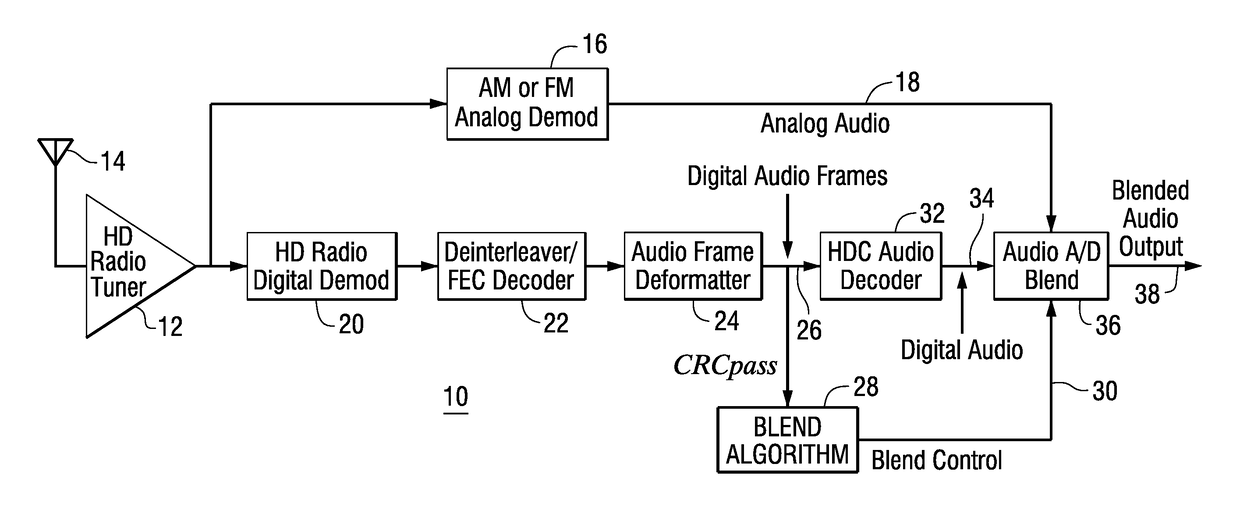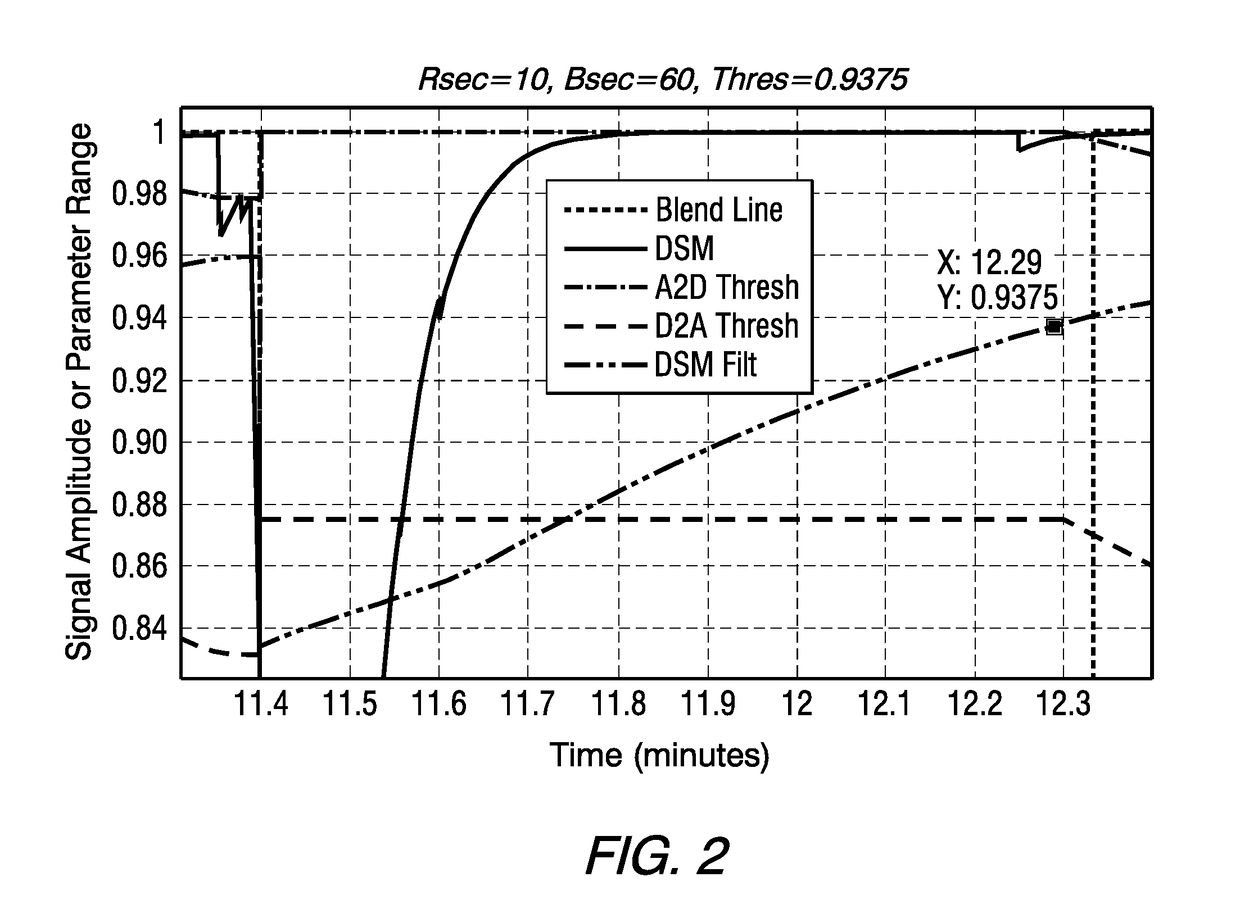Method and apparatus for blending an audio signal in an in-band on-channel radio system
a radio system and audio signal technology, applied in the field of digital radio receivers, can solve the problems of reducing the static digital coverage area by several radial miles, affecting the signal strength of the signal,
- Summary
- Abstract
- Description
- Claims
- Application Information
AI Technical Summary
Benefits of technology
Problems solved by technology
Method used
Image
Examples
Embodiment Construction
[0021]Embodiments described herein relate to the processing of the digital and analog portions of a digital radio broadcast signal. This description includes an algorithm for blending between analog and digital audio streams for an HD Radio receiver. While aspects of the disclosure are presented in the context of an exemplary HD Radio system, it should be understood that the present disclosure is not limited to HD Radio systems and that the teachings herein are applicable to other forms of digital radio broadcasting as well.
[0022]A blend algorithm described herein combines several methods to improve blend performance, yielding generally fewer blends with a modest reduction in digital audio availability. Adaptive analog-to-digital and digital-to-analog blend thresholds are employed. The adaptive thresholds are influenced by several parameters, including:
[0023](1) A filtered signal-quality estimate (i.e., filtered Digital Signal Measure (DSM)) based on the Cyclic redundancy check (CRC...
PUM
 Login to View More
Login to View More Abstract
Description
Claims
Application Information
 Login to View More
Login to View More - R&D
- Intellectual Property
- Life Sciences
- Materials
- Tech Scout
- Unparalleled Data Quality
- Higher Quality Content
- 60% Fewer Hallucinations
Browse by: Latest US Patents, China's latest patents, Technical Efficacy Thesaurus, Application Domain, Technology Topic, Popular Technical Reports.
© 2025 PatSnap. All rights reserved.Legal|Privacy policy|Modern Slavery Act Transparency Statement|Sitemap|About US| Contact US: help@patsnap.com



